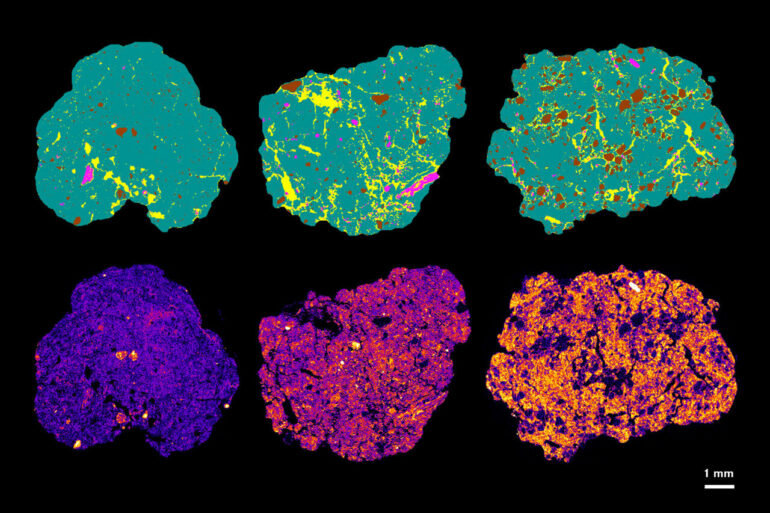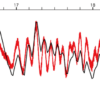Soils store more carbon than all the vegetation on the Earth’s surface. However, there are still many unanswered questions about precisely which processes favor accumulation in the soil. Under the leadership of the Helmholtz Centre for Environmental Research (UFZ), a team of soil scientists has developed a new method to show where and under what conditions carbon is stored in the soil. As they write in Nature Communications, it is primarily the network of soil pores that controls the spatial distribution of carbon.
In the public debate on climate protection, the importance of soil is often forgotten. However, soils store considerably more carbon globally than forests or the atmosphere. The long-term storage of carbon can be quite complex. On one hand, it depends on how much atmospheric carbon enters the soil through root growth, various mixing processes (e.g. soil cultivation or the activity of earthworms), and the seepage of dissolved organic compounds. On the other hand, it depends on whether the existing carbon in the soil can be stabilized or is decomposed by bacteria and fungi. Which process is more efficient—storage or decomposition—is determined primarily by the structure of the soil (e.g. the size of the network of pores that help transport air, water, and nutrients).
“The carbon stored in plant residues and humus is not decomposed if bacteria or fungal hyphae are larger than the pores in the soil where it is stored,” says Dr. Steffen Schlüter, UFZ soil physicist and lead author of the study. What’s more, if the pores are permanently filled with water and thus without oxygen supply (e.g. in intact peat soils), bacteria find it more difficult to use the carbon. “One of the decisive factors for where carbon is stored in the soil is thus the spatial distribution of the pores,” says Schlüter. It had previously not been possible to study the distribution pattern of the organic carbon within the millimeter and micrometer sized pores.
But the scientists at the UFZ have now managed to do this. With their new method, they can precisely localize the carbon in the soil. It is based on the staining of the organic compounds with osmium tetroxide, which seeps onto the carbon-containing double bonds and is then visualized using X-ray computed tomography (CT). By scanning the soil sample before and after staining, the researchers can infer the distribution of the carbon from the differences in the images. Until now, this was possible only with the help of elaborate synchrotron CT methods. However, because there are only two particle accelerators of this kind in Germany, access is severely limited. In contrast, X-ray CT is more widespread at soil science institutes in Germany.
The new approach thus facilitates research. “You can’t normally look inside the soil. But this methodological innovation allows us to draw conclusions about where and how well carbon is enriched in soil depending on the pore system and organic material such as roots and litter,” says Prof. Hans-Jörg Vogel, head of the Department of Soil System Science at the UFZ. This provides important information about processes in the soil and thus also about the consequences they have for the stabilization and decomposition of carbon in soil.
As an example, the soil scientists tested their methodology at three sites with different soil types and different moisture regimes: a Chernozem site with low annual precipitation at the UFZ research station in Bad Lauchstädt, a fine-textured Luvisol site with seasonal water logging in the foothills of the Alps, and a permanently wet Gleysol site influenced by groundwater near Gießen. The result: In the immediate vicinity of the pores (i.e. in a margin of 50 to 100 micrometers), the concentration of carbon is lower than in the rest of the soil. This is mainly because microbial activity decreases with increasing distance from the pores.
“This pattern has been seen at all three sites regardless of the moisture regime. The proximity to the pore system thus favors the decomposition of organic matter, and the distance to these pores promotes the stabilization of carbon in the topsoil—the layer that is particularly important for agriculture,” says Schlüter. In contrast, there are differences in the carbon content around organic material such as plant residues. In dry Chernozem soil, the carbon decreases with distance to the plant residues. The bacteria and fungi are attached to the plant residues so they can easily get at the carbon and metabolize it. The decomposition products then accumulate around the plant residues. In the Gleysol, the opposite was true. The scientists found no enrichment of products around the plant residues. One explanation is that dissolved decomposition products are more easily transported over longer distances under the wet conditions. “The moisture regime strongly influences the stabilization patterns of carbon in the soil because it controls the extent of carbon relocation from the plant residues into the surrounding soil,” says Schlüter.
The new methodological approach now opens up interesting research perspectives such as how the carbon is distributed in the subsoil (i.e., the deeper soil layers up to one meter). So far, there is only circumstantial evidence that the distribution patterns of carbon in the subsoil are different from those in the topsoil. That’s because the latter is not influenced by tillage and is not so intensely mixed by burrowing animals. Carbon can reach deeper layers only through accumulation at the few roots or the diffusion of dissolved organic substances.
“It would be exciting to find out more about these processes. Because of climate change and the resulting frequent droughts in the topsoil, plants are increasingly lacking water. The importance of the subsoil for plant growth is thus increasing,” says Vogel. With the new method, the researchers hope to better understand the processes of carbon storage in deeper layers as well as the causes of the differences in the carbon balance between different forms of land management (e.g., grassland use and arable farming).
More information:
Microscale carbon distribution around pores and particulate organic matter varies with soil moisture regime, Nature Communications (2022). DOI: 10.1038/s41467-022-29605-w
Provided by
Helmholtz Association of German Research Centres
Citation:
It’s the pore that counts: Spatial distribution of pores helps determine where carbon is stored in the soil (2022, April 21)



